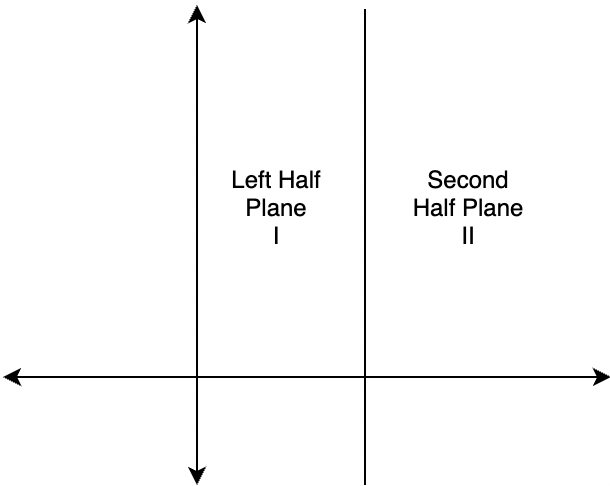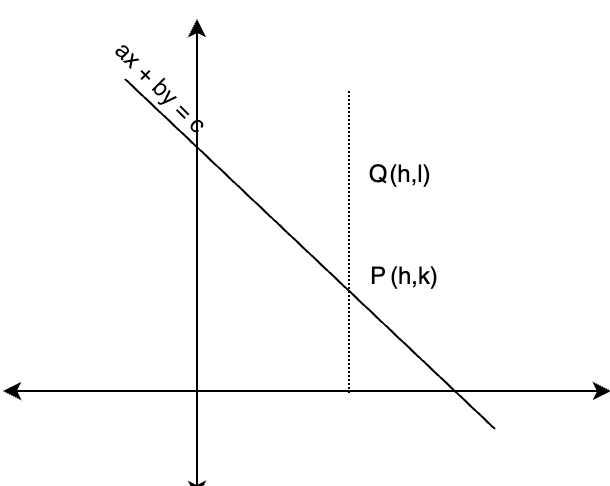我们知道如何公式化不同程度的方程,并且在现实生活中经常使用它,但是问题来了,是否总是有可能将情况转换为方程?有时我们会收到这样的声明,例如德里每天的Covid案件数量已超过10,000。此短语“小于”,“大于”,“小于或等于”等。此类短语很难转换为方程式。对于这种情况,我们需要学习如何在其中建立不等式的方程式。让我们详细了解一下。
什么是不平等?
让我们考虑一个例子,阿尼尔想买一些冷饮。每杯冷饮的价格为20卢比,而他的总和为190卢比。假设他买了x冷饮。 x的最大值是多少?它可以用下面给出的方程式表示
20倍<190
Two real expressions or real numbers related by the symbols “<“, “>”, “≤” or “≥” are called inequalities. The statement given above is an inequality. There are two types of inequalities:
- Numerical Inequalities: 3 < 5 or 7 > 5.
- Literal Inequalities: x > 5 and y < 7.
不平等的一些一般例子是,
ax + by + c> 0…。(1)
ax + by + c <0…。(2)
ax + by + c≥0…。(3)
ax + by + c≤0…。(4)
从以上等式中,等式(1)和(2)被称为严格不等式,而(3)和(4)被称为松弛不等式。
不等式的解
解决不平等问题的任何方法就是使不平等成为真实陈述的变量值。例如,假设我们有一个不等式x <5。在这种情况下,所有小于5的x值都使该不等式成为真正的不等式。在解决不平等问题时,我们需要牢记一些规则,
- 可以在不等式的两边加上或减去相等的数字。
- 不等式的两边都可以乘以(或除以)相同的正数。但是,当双方乘以或除以负数时,不等式的符号就会反转。
这些操作不会影响不平等,可以用来简化我们的不平等。
问题:解决不等式20x <80,并在图表上显示其解决方案。
解决方案:
We are given,
20x < 80
We know dividing the inequality by a positive number doesn’t change anything. Let’s divide the inequality with 20.
x < 4.
Now all the value less than 10 are solutions to this inequality. The figure below represents this solution on graph.

两个变量不等式的图形表示
我们看到了一个变量的线性不等式图。两个变量中的线性方程式表示将平面分为两部分的直线。我们称每个部分为半平面。如果线是垂直的,它将把平面分为左半平面和右半平面,而非垂直线则将平面分成左上半平面和下半平面。


笛卡尔平面中的任何点将位于直线上或位于半平面I和II的任一平面上。
假设我们有一行,
斧+ by = c
在此,a≠0,b≠0。
现在,当我们在方程式中放置任意点(x,y)时,将出现三种可能的情况:
- 斧头+ by> c
- 斧头+
- 斧+ by = c
让我们看看所有情况
情况(i):ax + by> c
Let’s say b > 0. Consider a point(h, k) that satisfies the equation. Then,
ah + bk = c

取另一个任意点(h,l)。下图显示了直线上的两个点。我们知道,
l > k
bl > bk
ah + bl > ah +bk
ah + bl > c
因此,点(h,l)满足ax +的性质> c。因此,位于半平面II中的所有点都满足该不等式。对于b <0,也可以类似地证明。
情况(ii):ax + by = c
All the points satisfying the line, that is lying on the line satisfy this equation.
情况(iii):ax + by
All the remaining points, that is the points lying in the half-plane I satisfy this inequality.
让我们看看这些概念的一些问题。
样本问题
问题1:以图形方式解决方程5x + 3y> 6。
解决方案:
First we need to draw the graph for 5x + 3y = 6. It can be done by bringing the equation in slope intercept form or the intercept form.

Now select a point arbitrarily to check. Let’s take (0,0).
Substituting this point (0,0) in the equation,
5(0) + 3(0) = 0 < 6.
Thus points in the lower half will satisfy 5x + 3y < 6. Thus, all the points satisfying the given equation will lie on upper half plane.

问题2:以图形方式解决方程6x + 2y> 3。
解决方案:
First we need to draw the graph for 6x + 2y = 3. It can be done by bringing the equation in slope intercept form or the intercept form.

Putting (0,0) in the equation,
6(0) + 2(0) = 0 < 3. Thus, the points in the upper half plane satisfy the given equation.
6x + 2y > 3

问题3:以图形方式解决方程x + y <2。
解决方案:
The equation given is, x + y < 2.
Putting the (0, 0) in the equation,
0 < 2.
This point satisfies the given equation. Thus, the graph will be,

问题4:以图形方式解决方程3x – 5y <20。
解决方案:
As usual, we will take (0, 0) as the point we want to test on.
3(0) – 5(0) < 20.
This point satisfies the given inequality. Thus, the upper left half plane satisfies the inequality.

问题5:从下图给出不等式。

解决方案:
We can see this line is parallel to one of the axes. The equation of the line is,
x = 4
Now we want to form the linear inequality for the shaded region. (0,0) in the shaded region so we will check for that.
x = 0 < 4
Thus, the shaded region satisfies,
x < 4
问题6:从下面给出的图表中得出不等式。

解决方案:
From the graph, first let’s deduce the equation of the line. We can see the that x and y-axis intercepts are of length 4.
![]()
Now we need to figure out which condition is satisfied by the lower half plane. Let’s use (0,0) as it belongs to lower half plane. Substituting the value (0,0) in the equation,

So,
